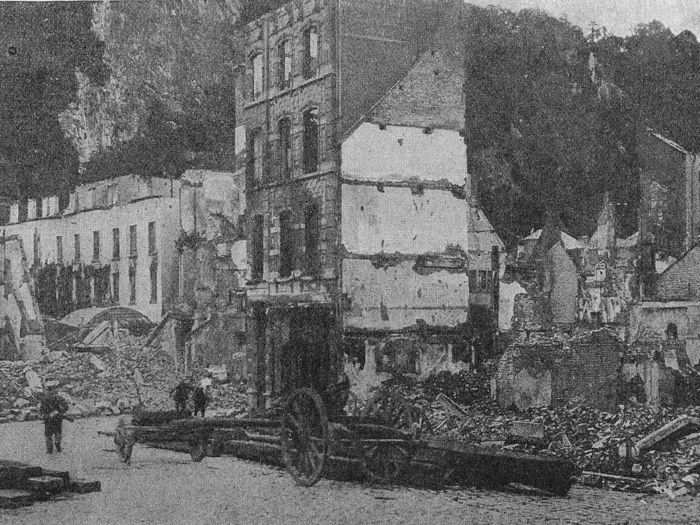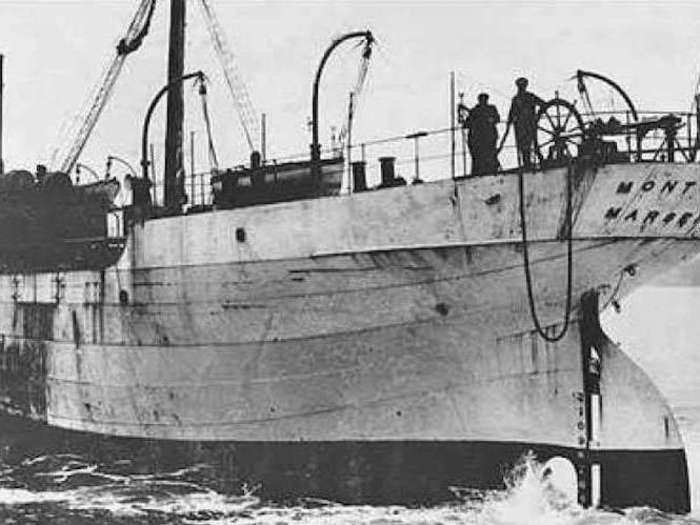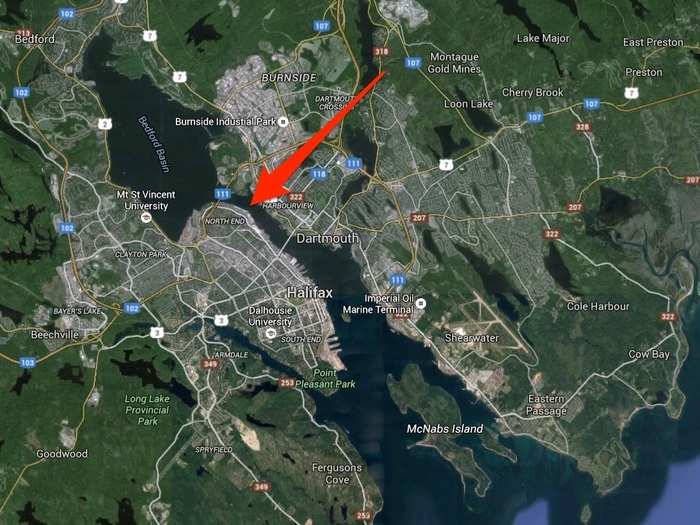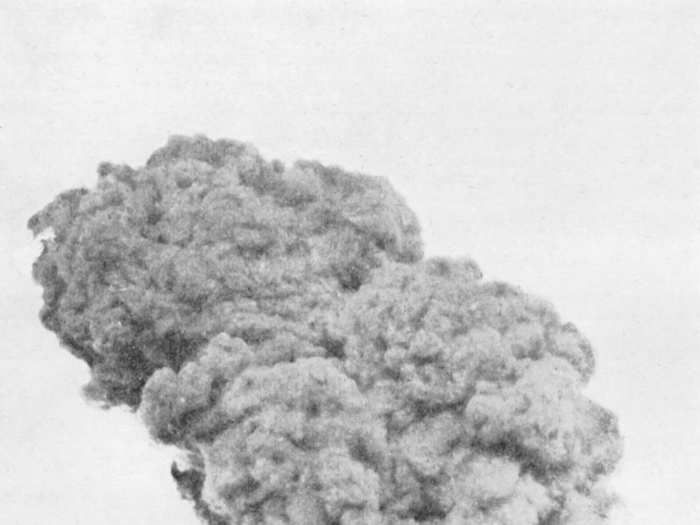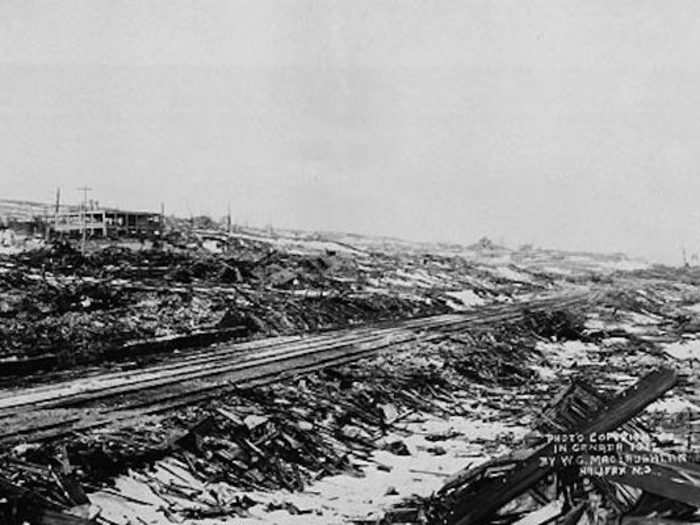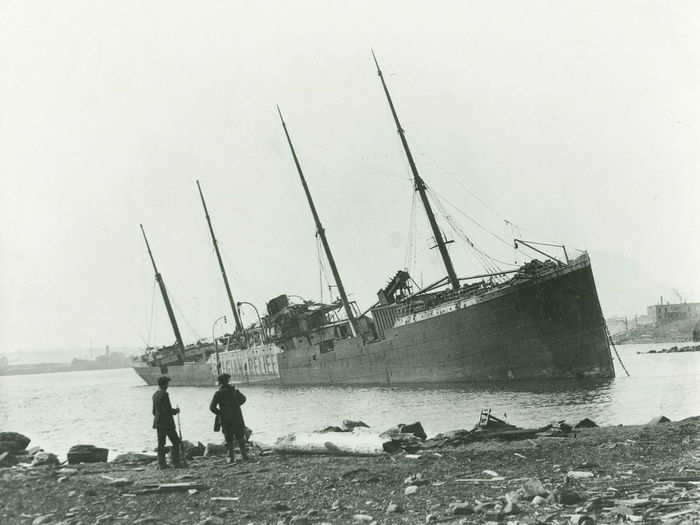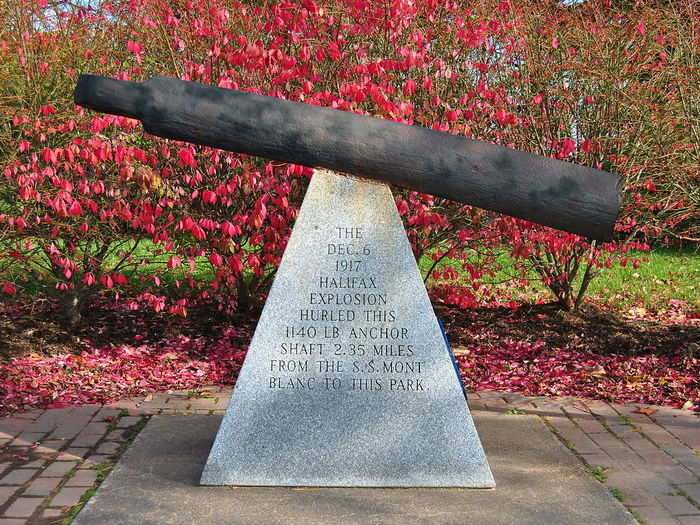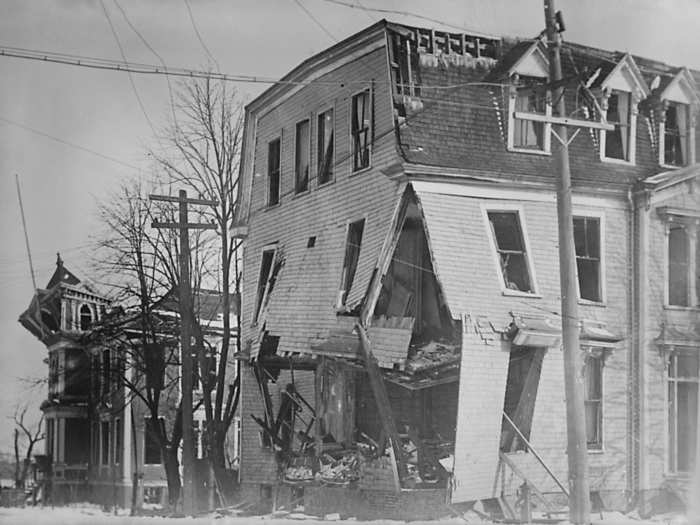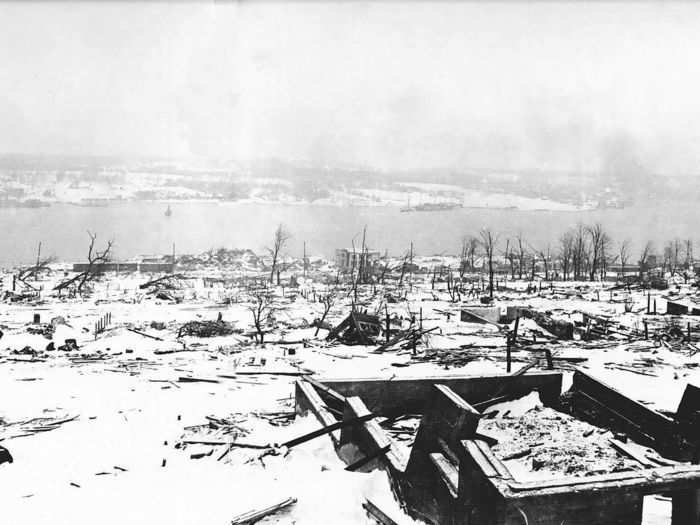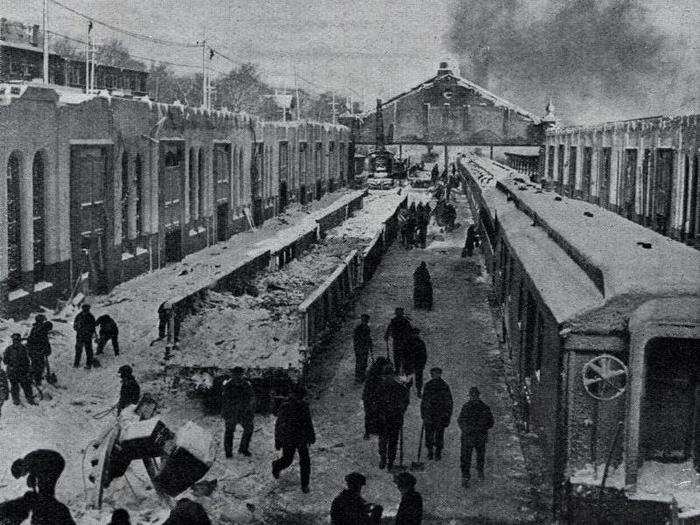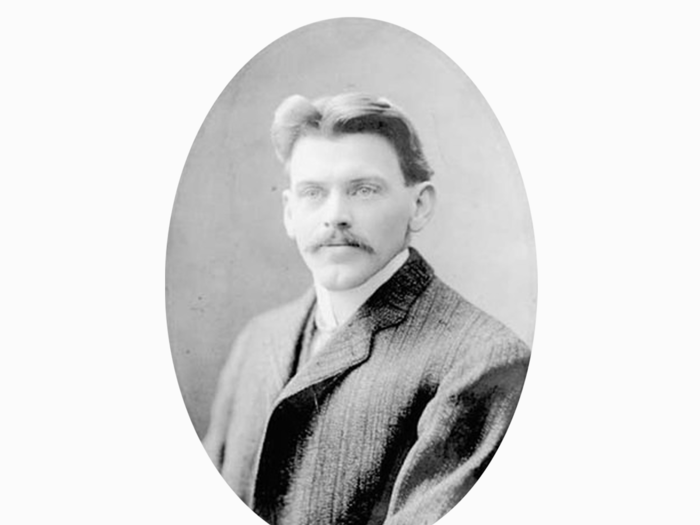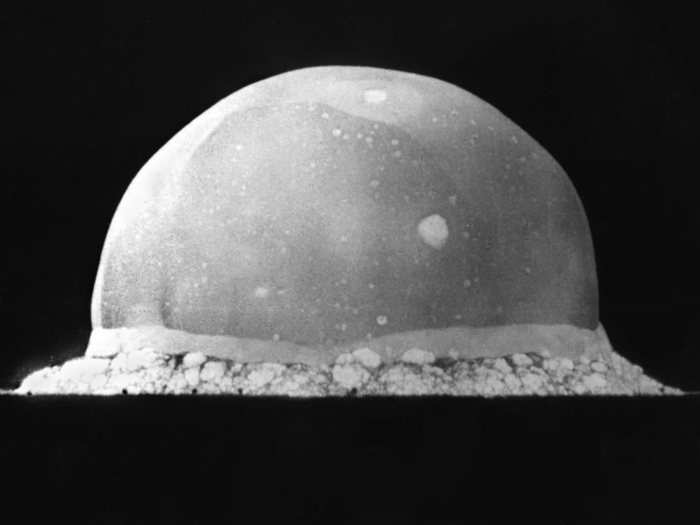On December 6, a Norwegian cargo ship, the SS Imo, was departing Halifax on its way to New York. The ship was en route from the Netherlands to ferry supplies back to a war-ravaged Belgium.
At the same time, the SS Mont Blanc was bound to return to France carrying a host of highly explosive materials: 2,367 tons of picric acid, 62 tons of guncotton, 250 tons of TNT, and 246 tons of benzol in barrels below deck.
Though the collision occurred at low speed, the barrels of benzol spilled, and sparks from the crash ignited the fuel. Minutes later, the Mont Blanc exploded with the force of 2,989 tons of TNT.
The shockwave from the blast covered 325 acres of ground, and leveled the Richmond neighborhood. The temperature in blast exceeded 9,000°F. The water around the Mont Blanc vaporized and pushing a 52-foot-tall tidal wave three blocks into town.
A 1,140 pound piece of its anchor was found buried more than two miles away from the explosion. A barrel from one of the ship's guns traveled three and a half miles.
Much of the city was leveled, with 12,000 buildings destroyed or made uninhabitable, leaving a huge portion of the city's population without shelter from the frigid December weather.
Almost every window in the city shattered — some reportedly 50 miles away. Even the buildings left standing were severely damaged.
About 1,600 people died instantly in the blast, and 350 later succumbed to injuries. An estimated 9,000 people were injured in the accident and 22% of the city's population were casualties.
The casualties would have been even worse had a railway dispatcher, Vincent Coleman, not halted a train carrying 300 people towards the train station directly in front of the burning ship.
Coleman's final action was sending a telegraph warning up the tracks: "Hold up the train. Ammunition ship afire in harbor making for Pier 6 and will explode. Guess this will be my last message. Good-bye boys."

